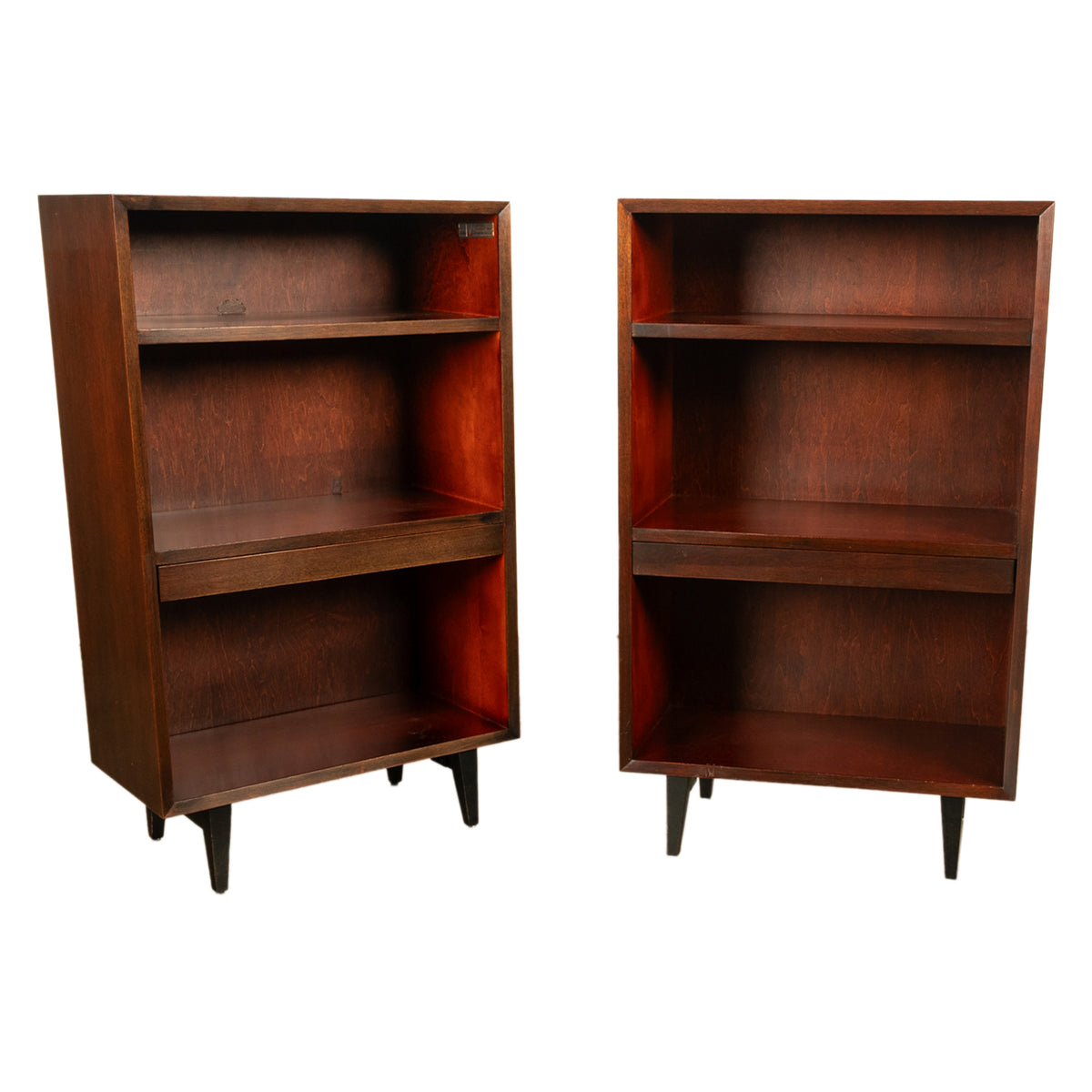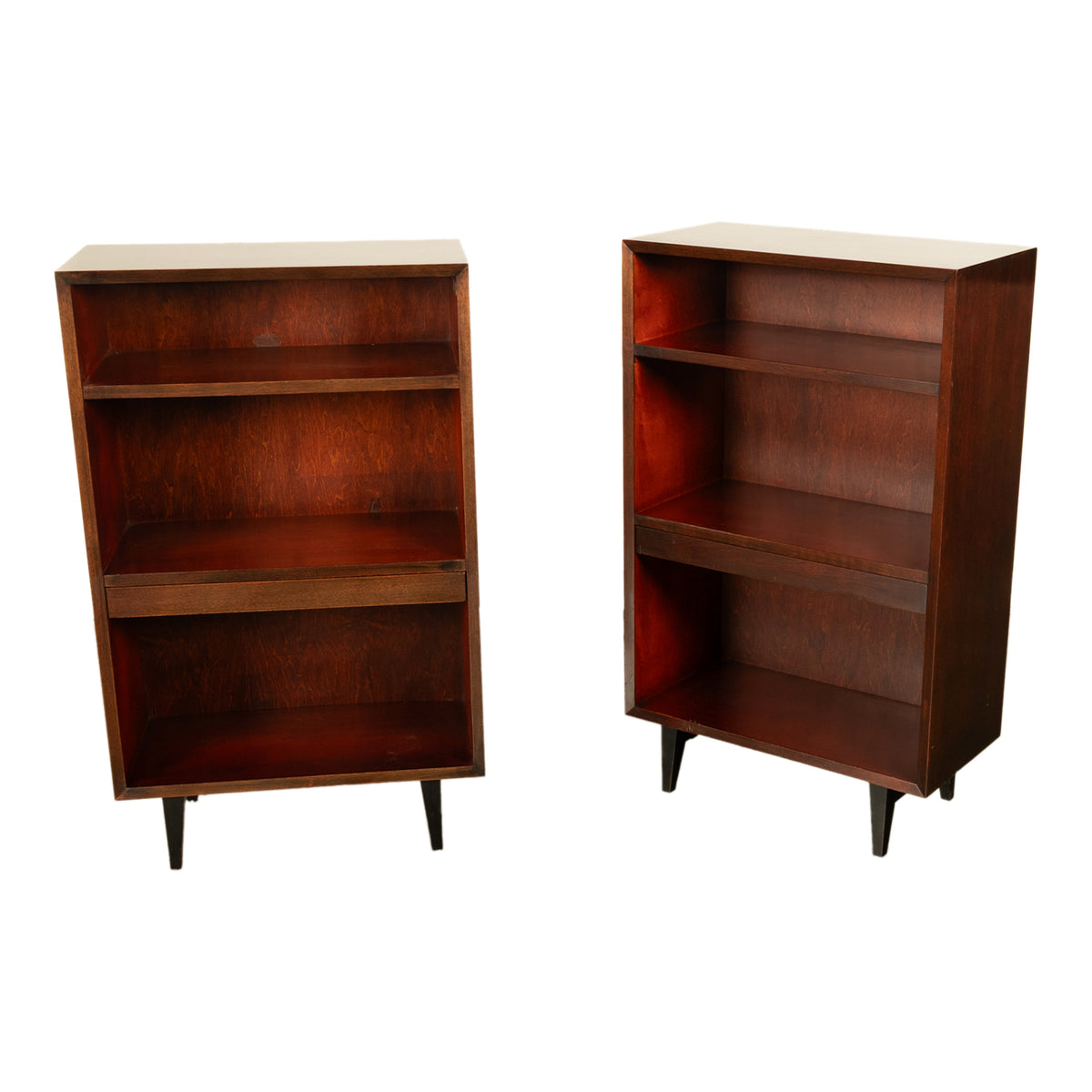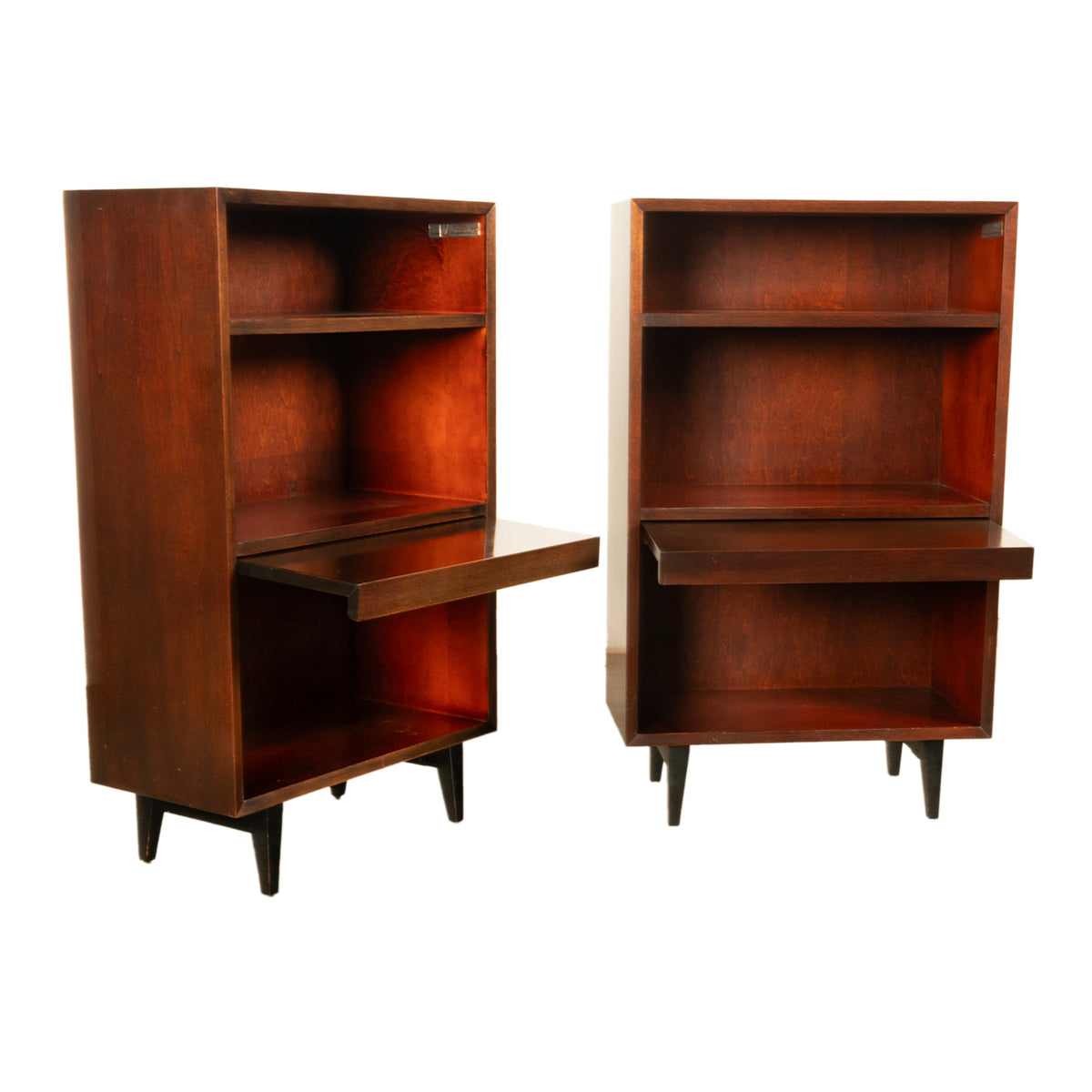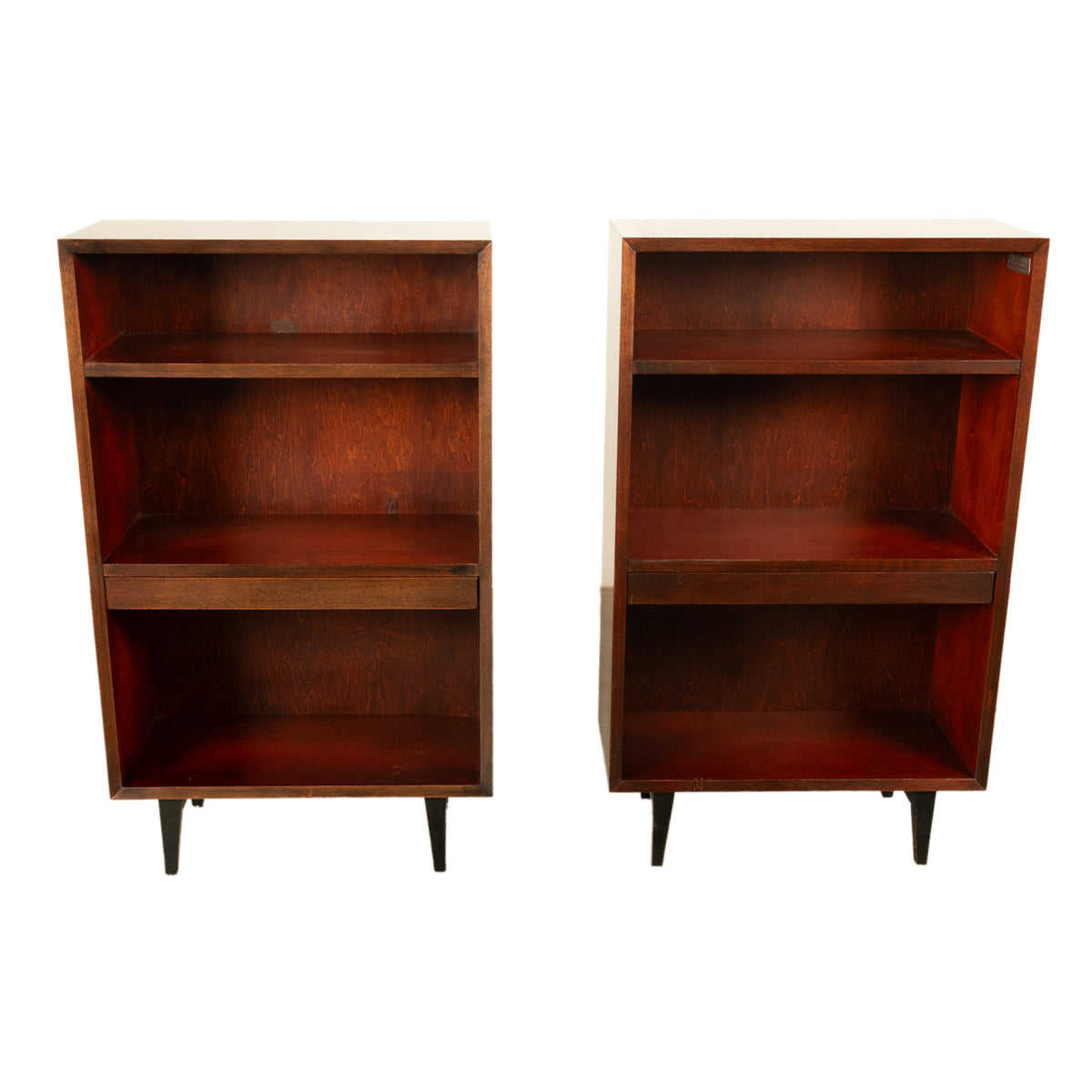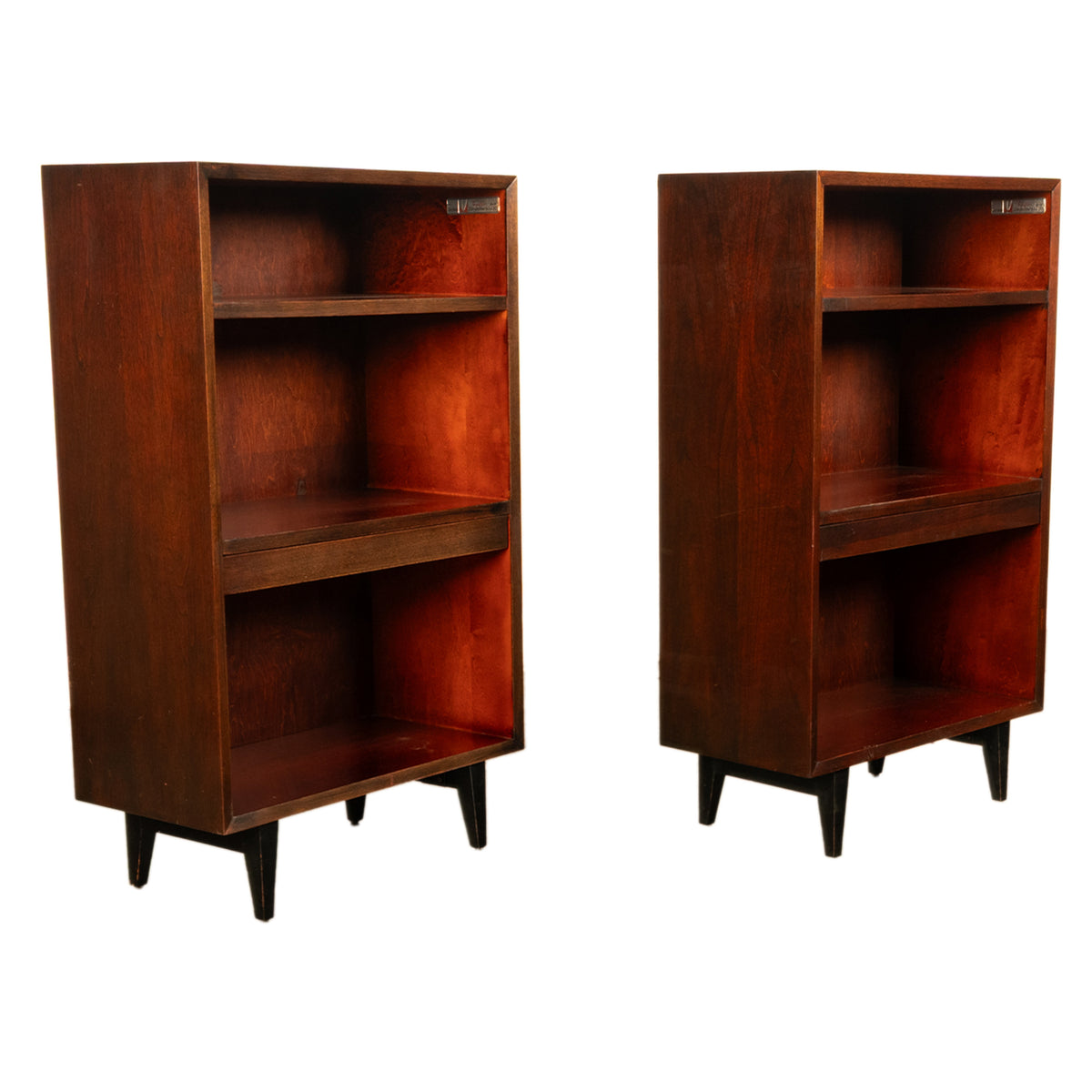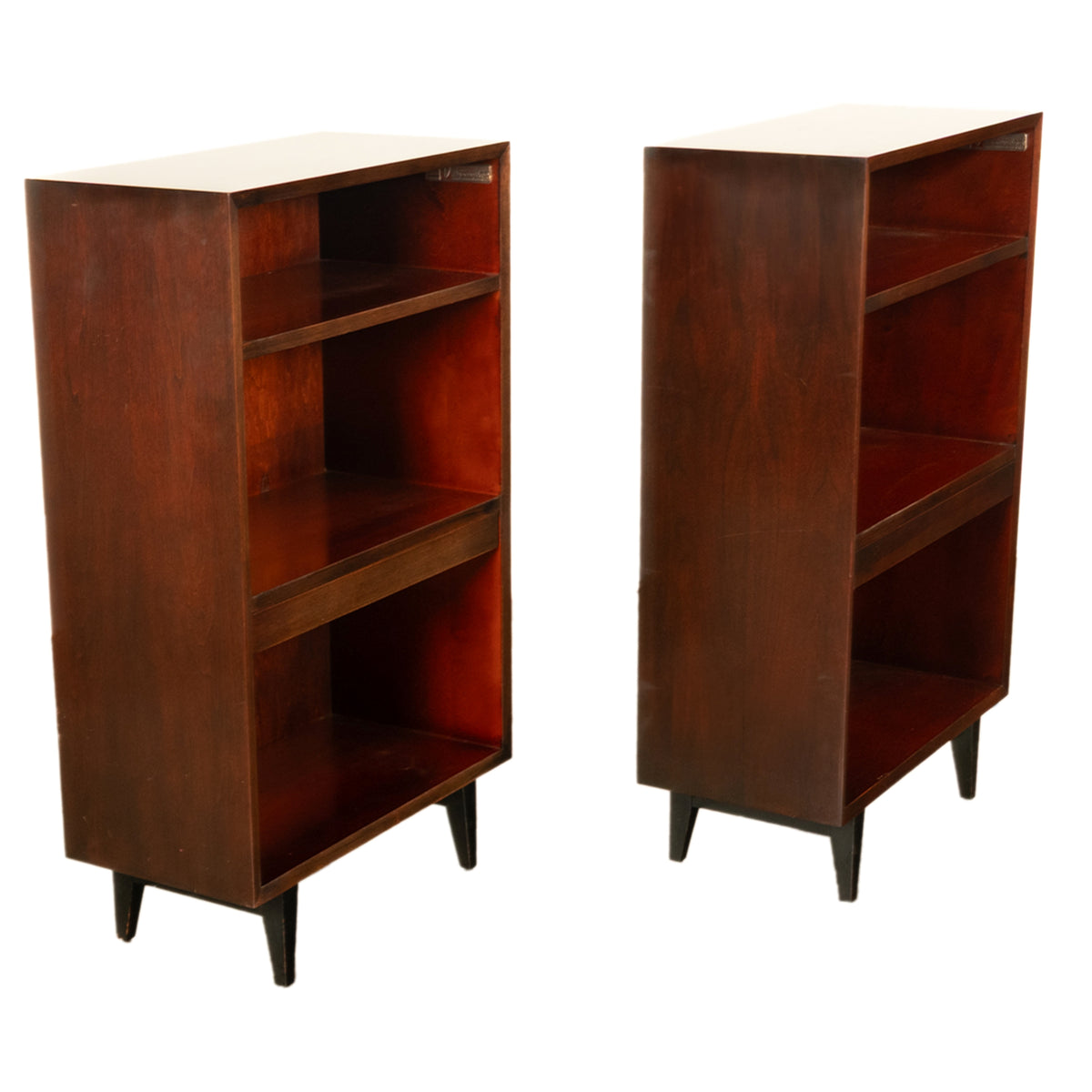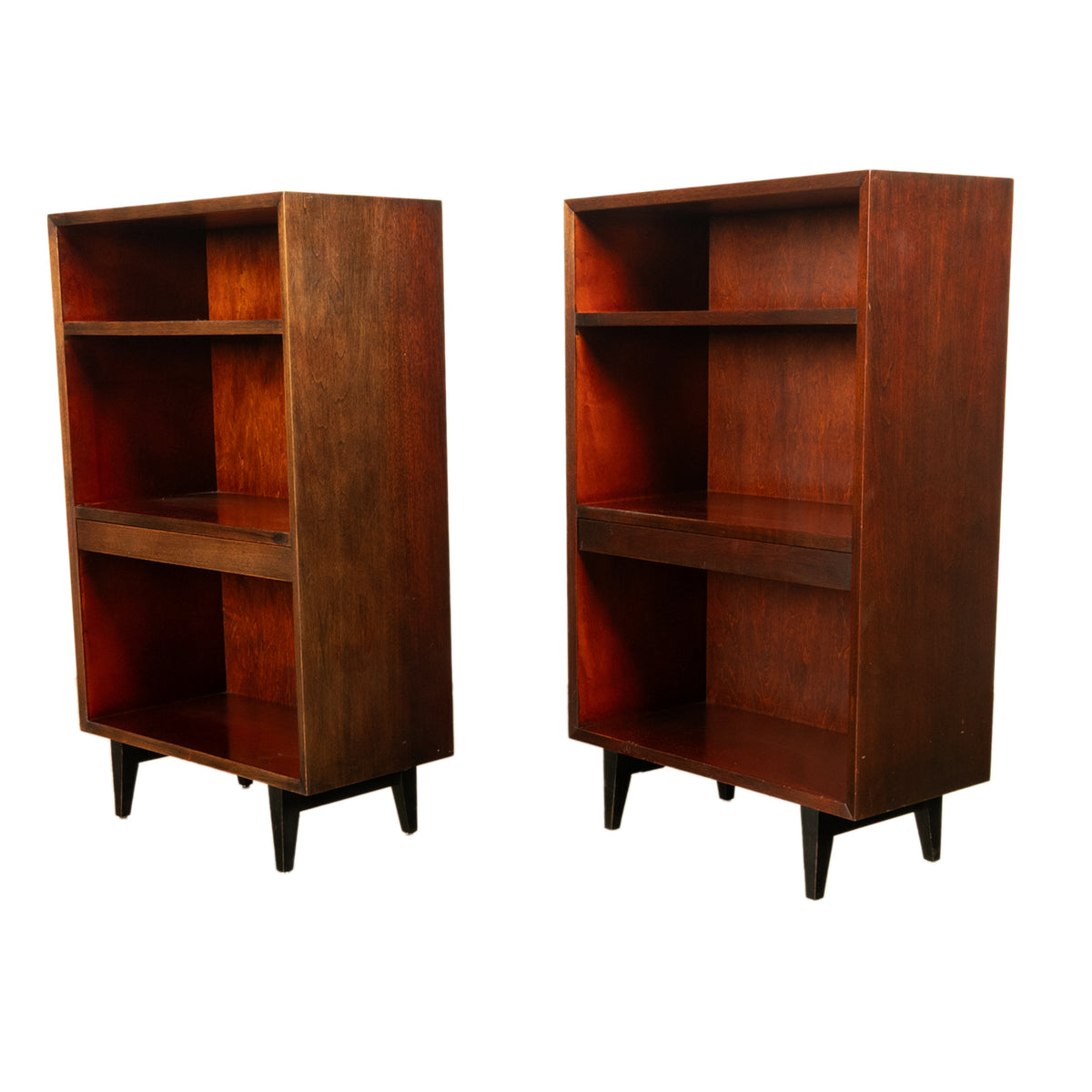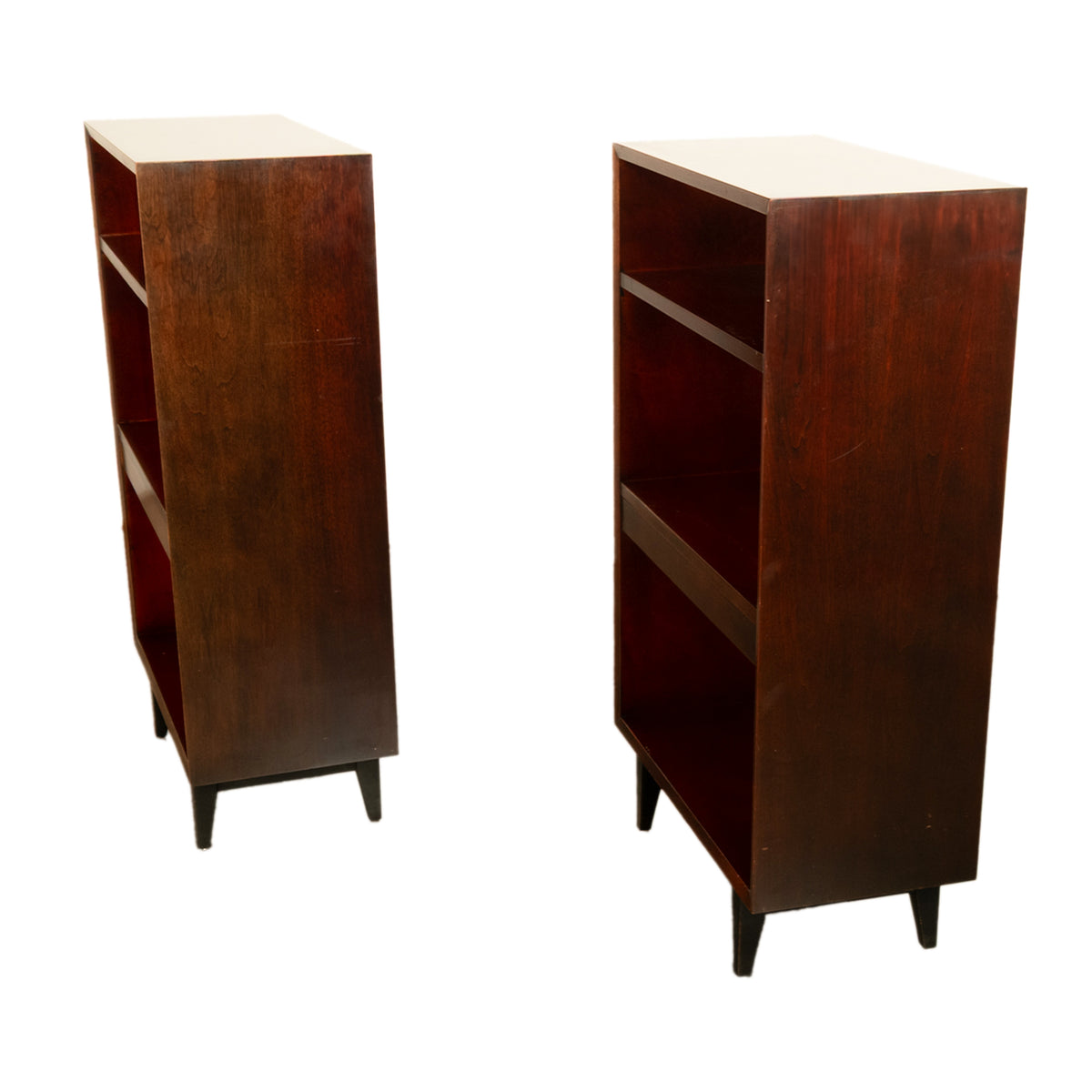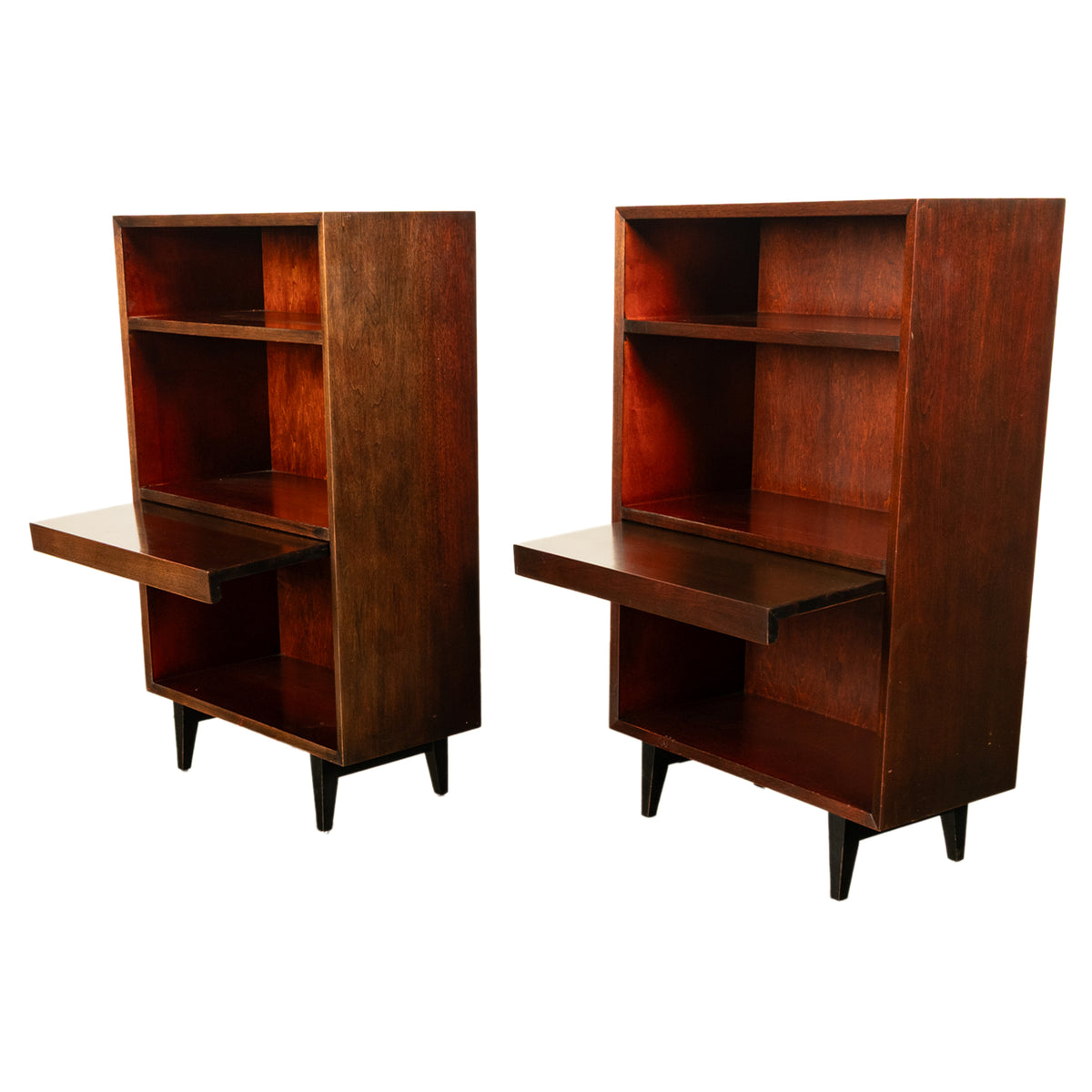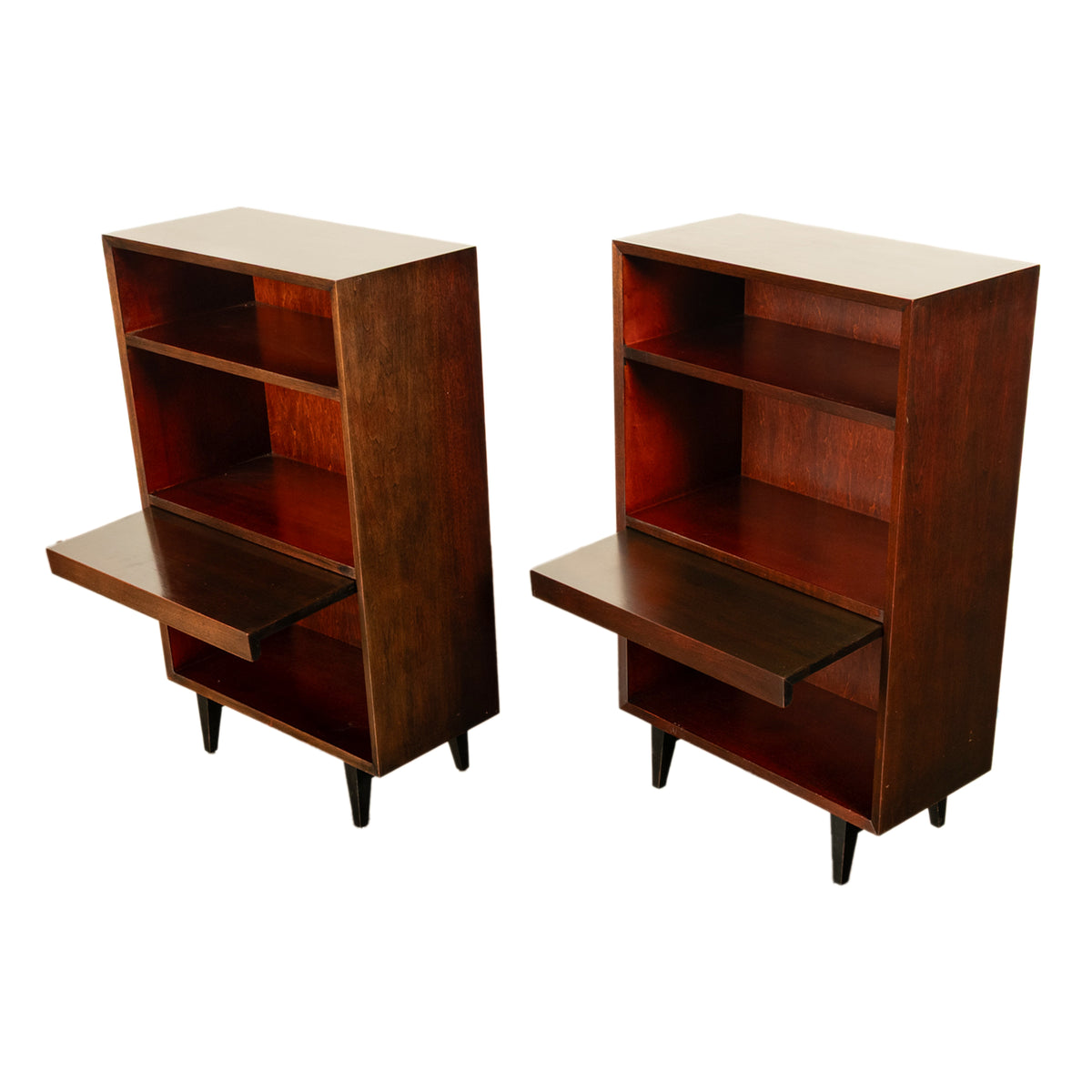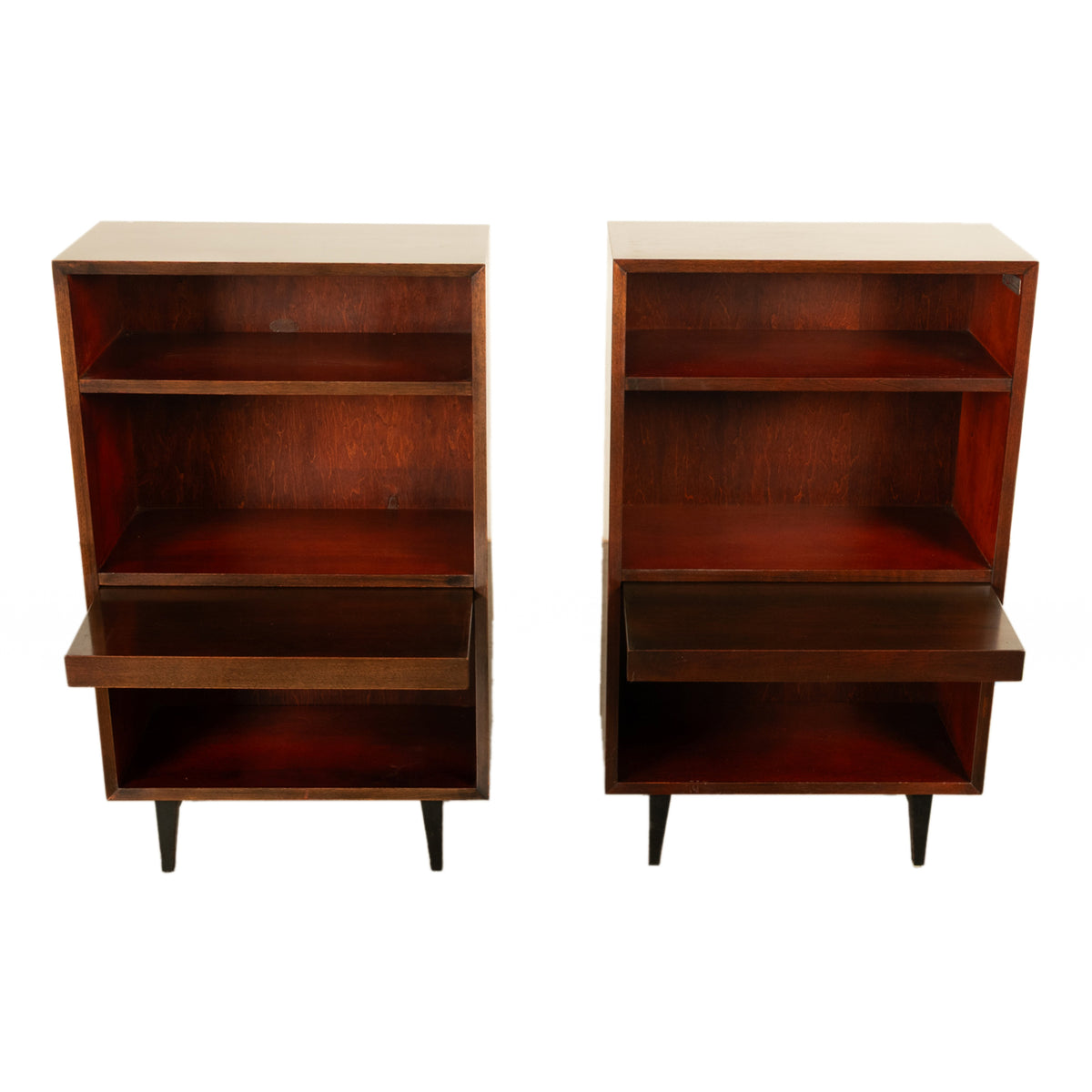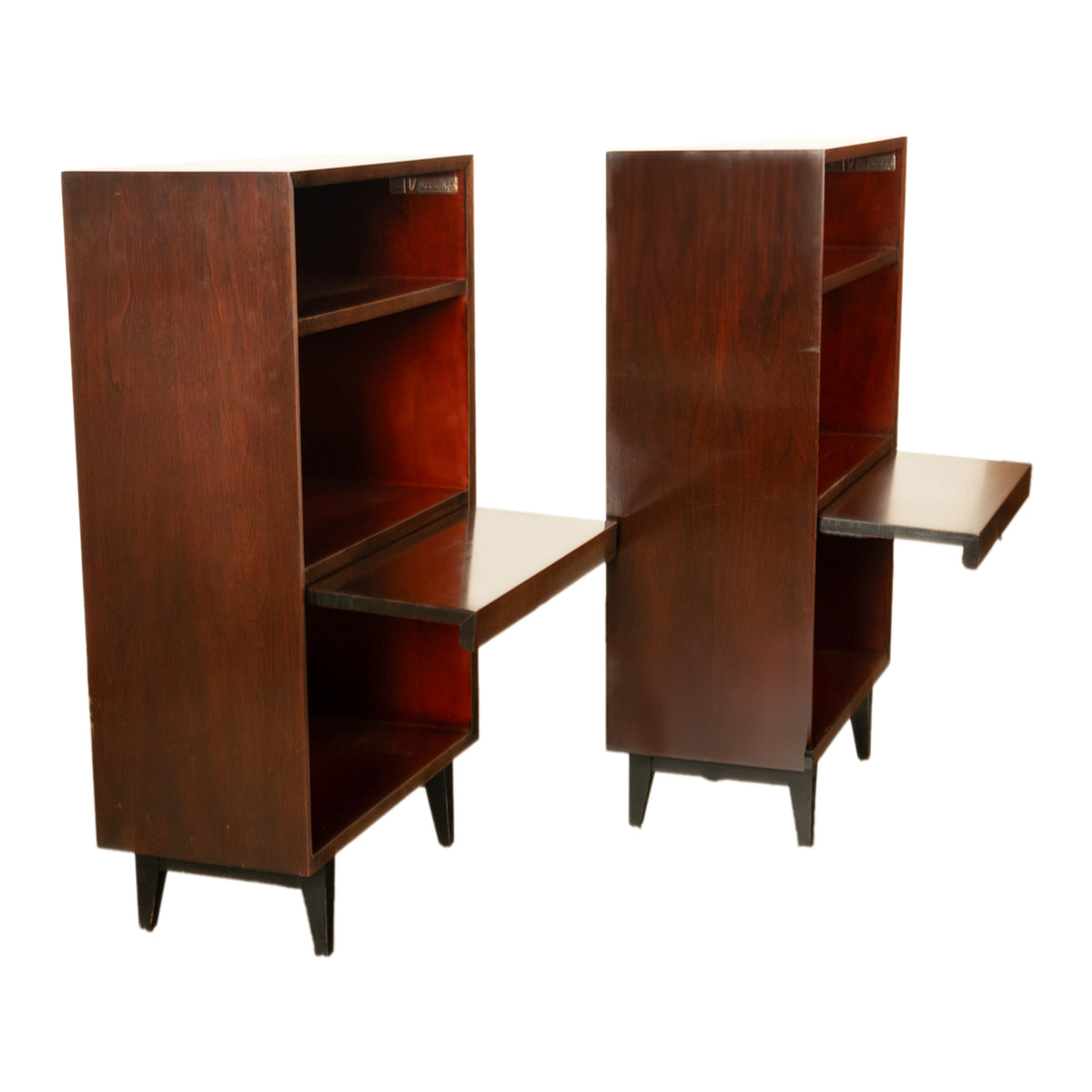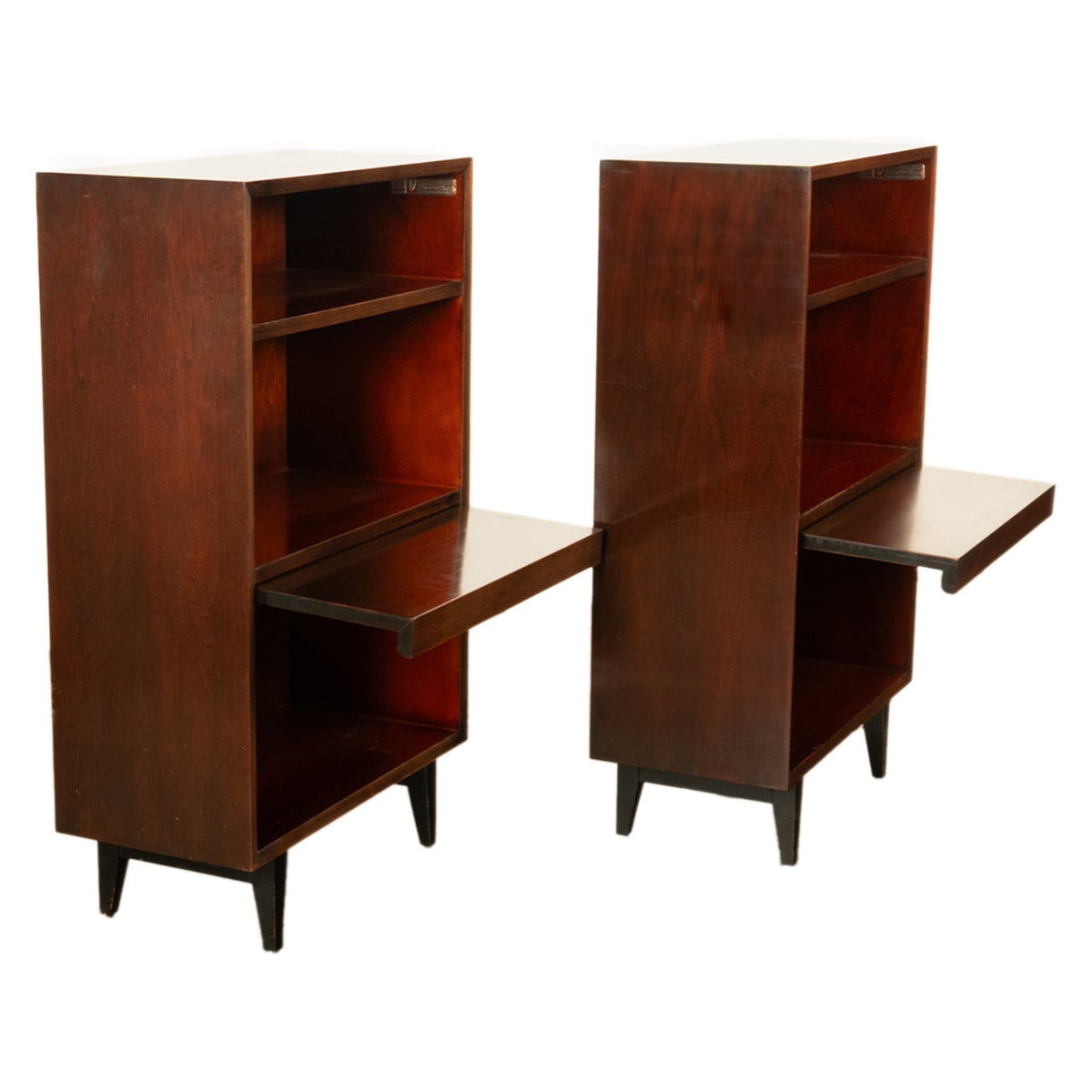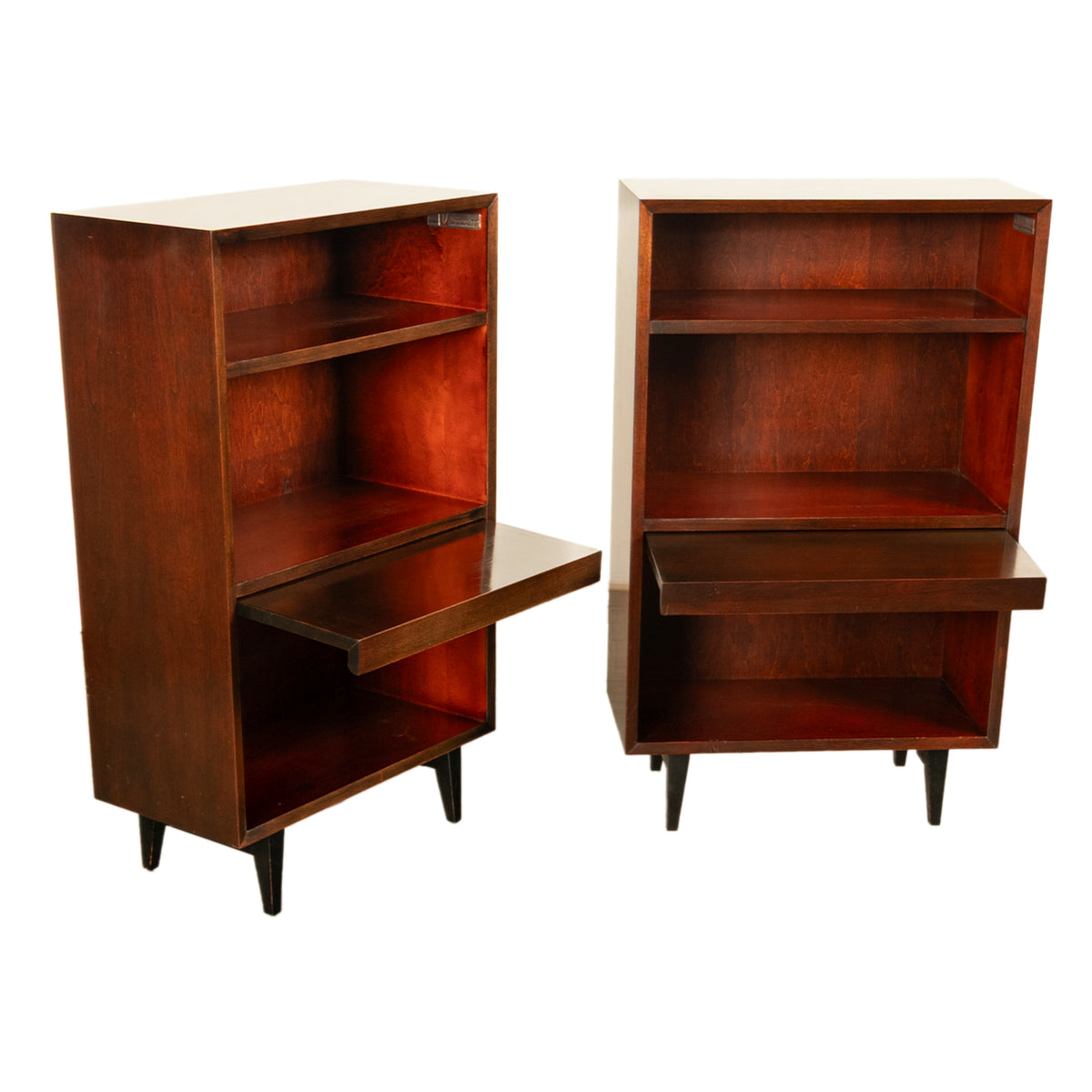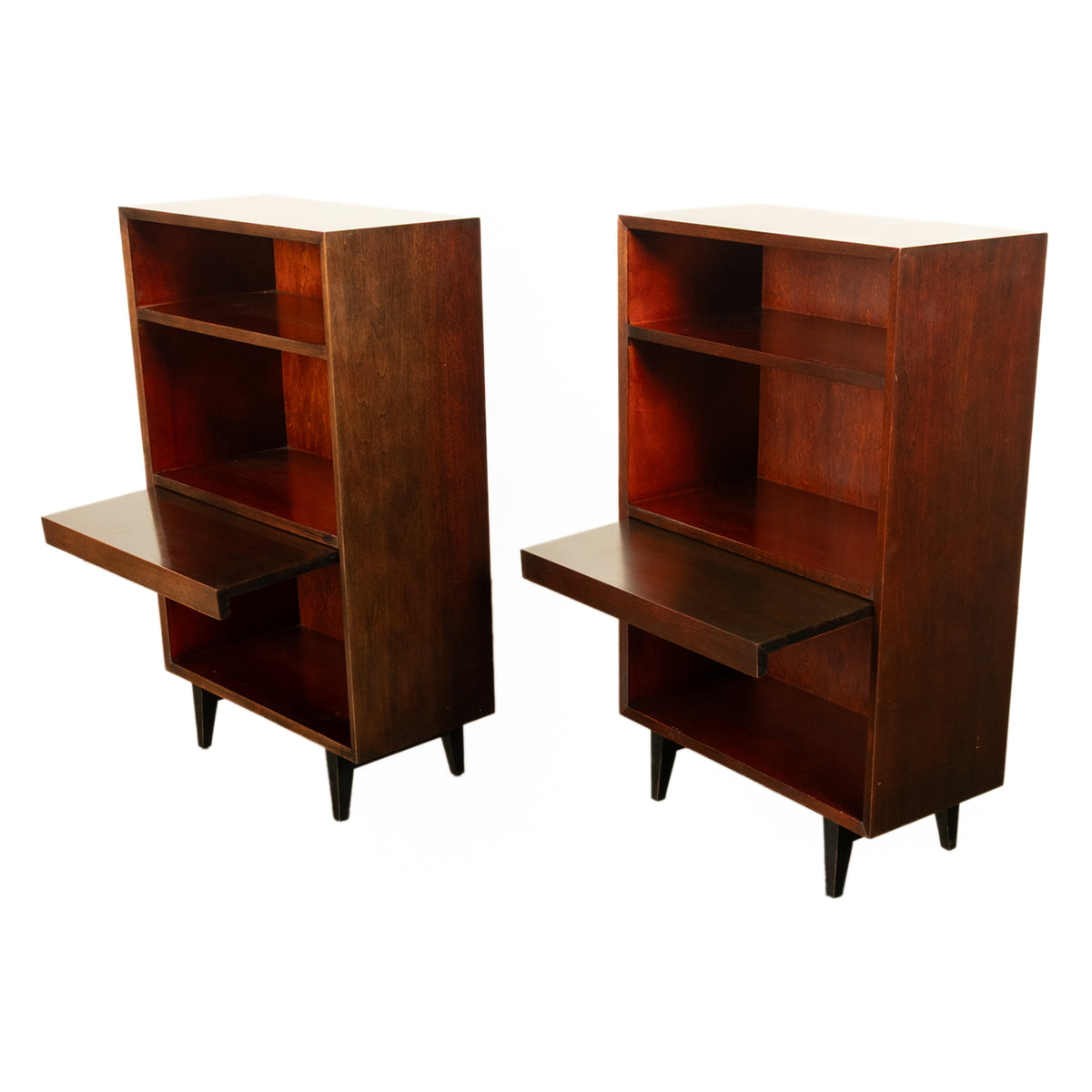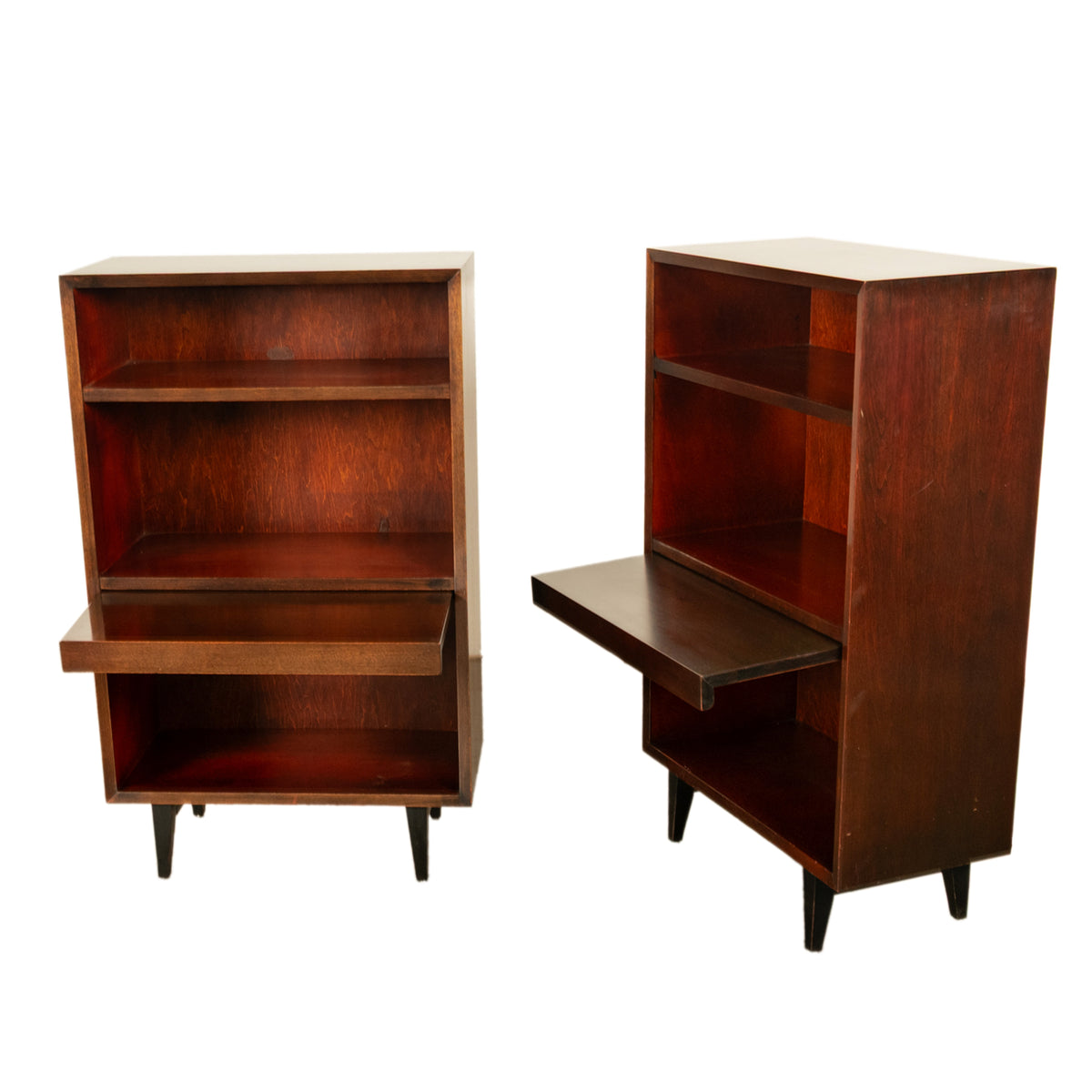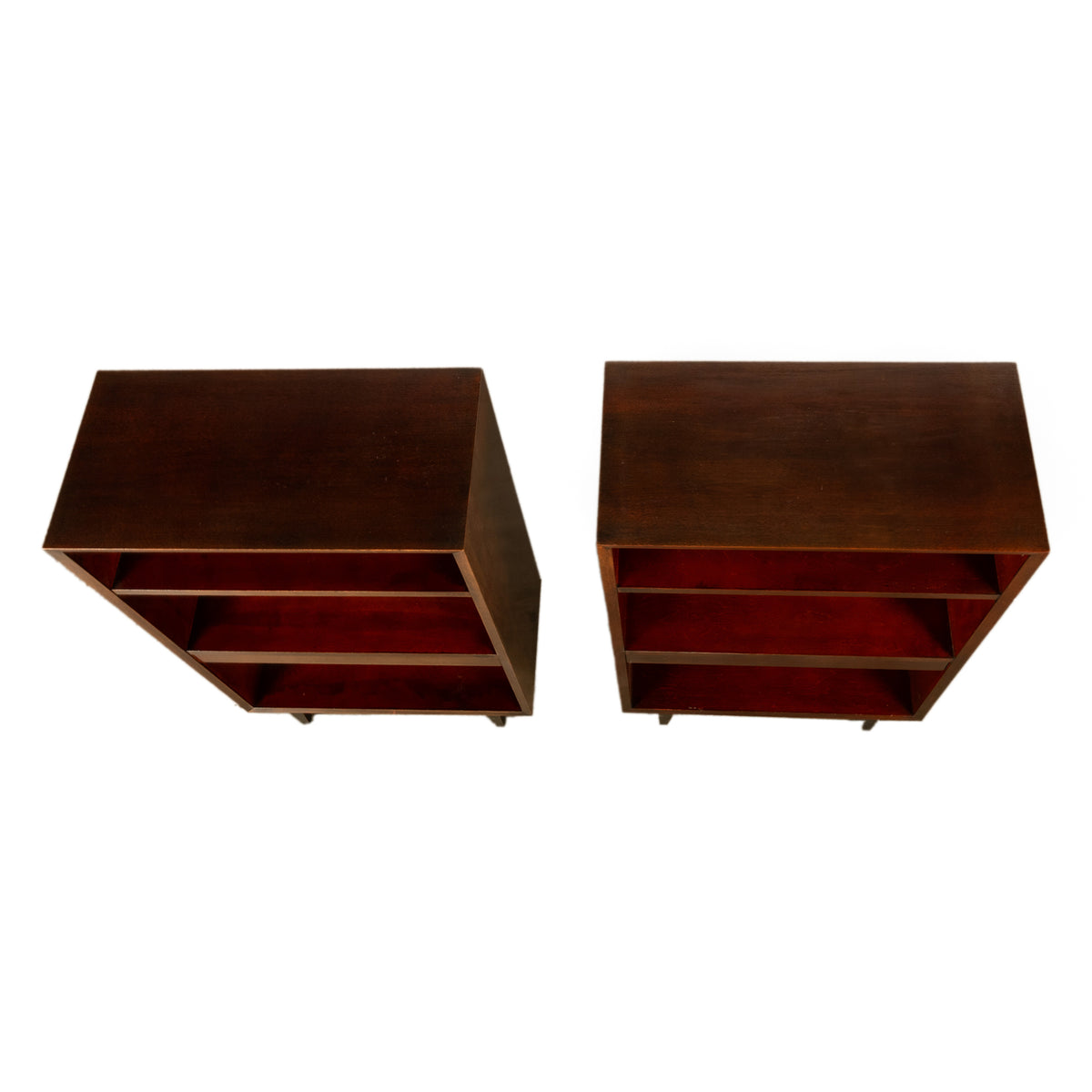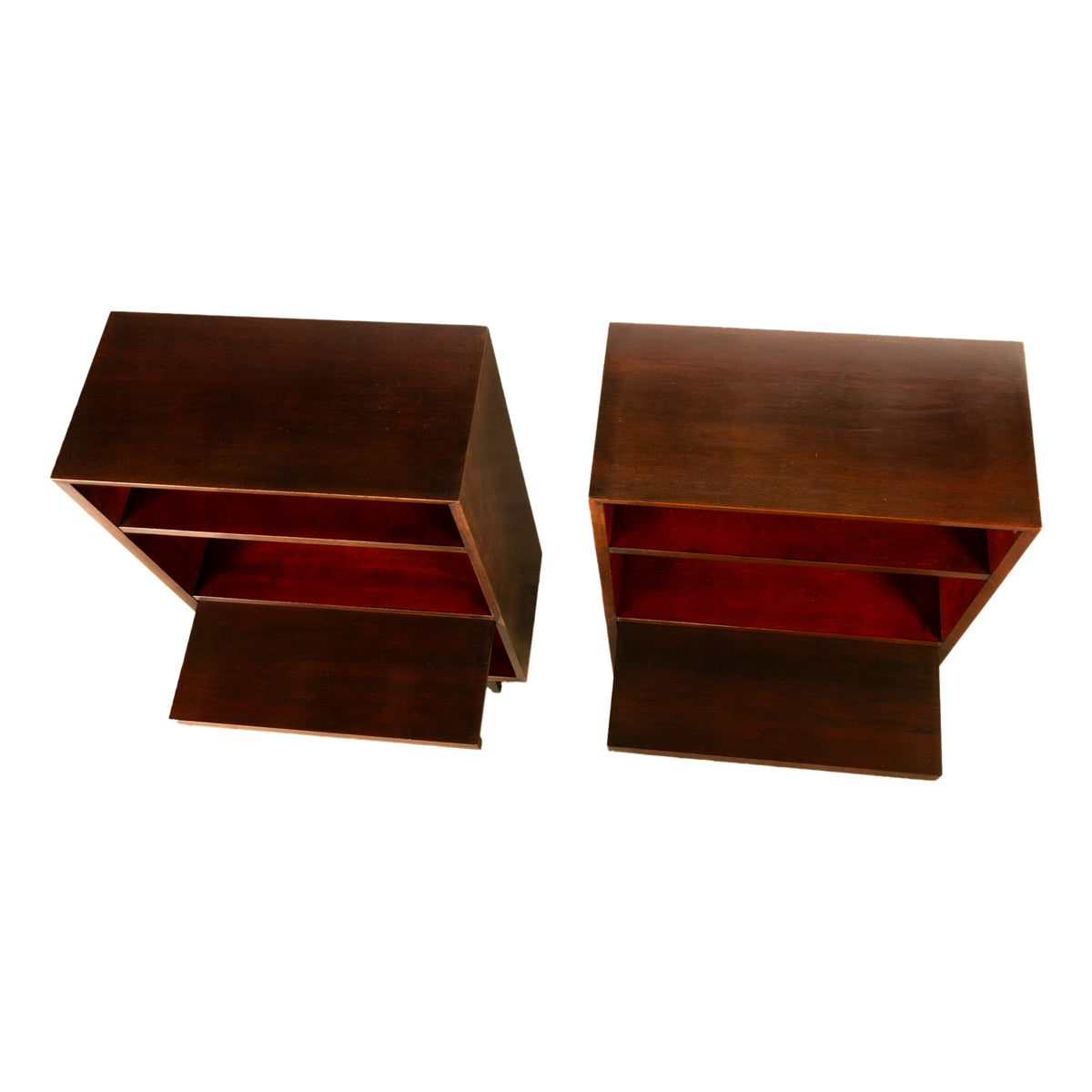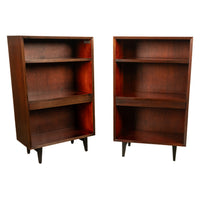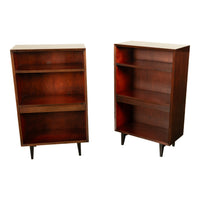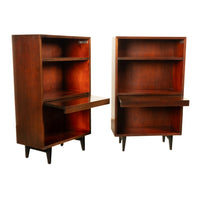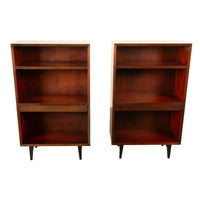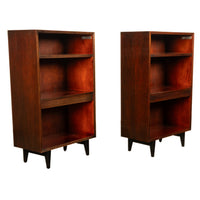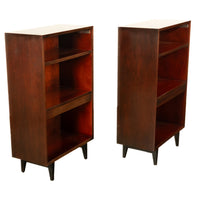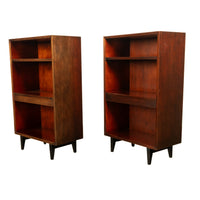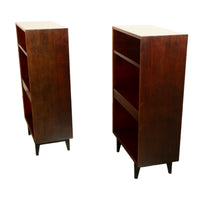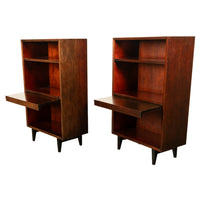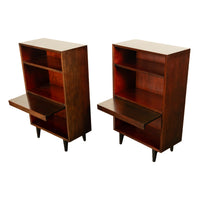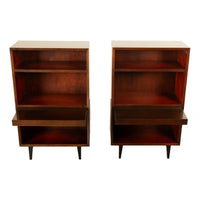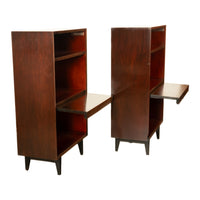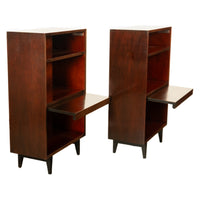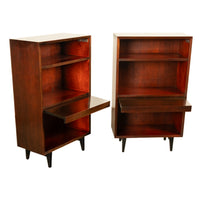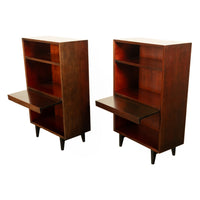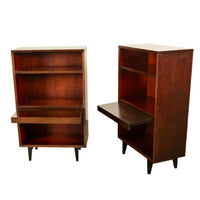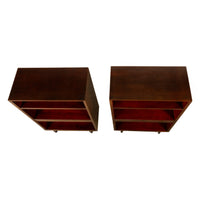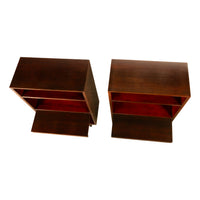Pair American Modernist Walnut Nightstands George Nelson for Herman Miller 1955
- Regular
- $ 4,995
- Sale
- $ 4,995
- Regular
- Unit Price
- per
A good pair of original American Modernist nightstands/bookshelves by George Nelson (1908-1986) for Herman Miller, circa 1955.
The Basic Cabinet Series was first introduced in the late 1940s to meet "the requirements of modern living", as George Nelson said, who was one of the most celebrated furniture designers of the 20th century.
These dressers came in two finishes walnut or oak, this is the less common walnut finish, each nightstand has the Herman Miller aluminum decal in the drawer, with George Nelson's facsimile signature. Each stand has twin shelves and a pull out bedside table slide.
Condition is very good indeed, both nightstands have just had their original finish freshened in Bloomsbury's professional workshops, the drawers open and close with ease and are ready to receive your clothing, bedding or?
A rare original pair of iconic American designs by one of America's iconic designers.
George Nelson has been called; the Designer of Modern Design. Born in 1908 in Hartford Connecticut, he studied architecture at Yale University and earned a fellowship to study at the American Academy in Rome from 1932-34. A prolific writer, designer and creative thinker, Nelsons work includes architecture, furniture, lamps, clocks, exhibits, identity programs, graphics, urban development, numerous books, articles and visual documentaries. He was the lead designer for the 1959 American National Exhibition in Moscow for the 1959 U.S.S.R. U.S.A. exchange, and introduced America to the Russian people.
When writing on his own remarkable 50-year career, George described a series of creative "zaps"--moments of out-of-the-blue inspiration "when the solitary individual finds he is connected with a reality he never dreamed of."
An early zap came when he was at the American Academy in Rome. Before returning home, an idea struck him: He would travel Europe and interview leading modern architects, hoping to get the articles published in the U.S. He succeeded, and in the process introduced the U.S. design community to the European avant-garde. This set in motion a sequence of what he called "lucky" career breaks that were really the inevitable outcomes of his brilliance as an observer, designer, teacher, and author.
The first break was being named an editor of Architectural Forum magazine. Working on a story in 1942, he was looking at aerial photos of blighted cities when--zap!--he developed the concept of the downtown pedestrian mall, which was unveiled in the Saturday Evening Post. Dubbed The Greening of Main Street, this led the way to much urban revitalization.
Soon after, another zap led to the Storagewall, the first modular storage system and a forerunner of systems furniture. The Storagewall showcased in a 1945 Life magazine article, caused a sensation in the furniture industry. Herman Miller founder D.J. DePree saw the article and was so impressed that he paid a visit to Nelson in New York and convinced him to be his director of design, which spurred Nelson to found his design firm, George Nelson & Associates. The warm personal and professional relationship between Nelson & DePree yielded a stunning range of products, some 70 in his first year as design director, from the playful Marshmallow Sofa to the first L-shaped desk, a precursor of today's workstation.
Nelson once wrote that Herman Miller "is not playing follow-the-leader." That's one reason why George Nelson & Associates worked with Herman Miller for over 25 years as they shepherded design into the modern era.
During this same period, George Nelson & Associates also created many landmark designs of products, showrooms, and exhibitions for a variety of companies and organizations.
Nelson said that for a designer to deal creatively with human needs, "he must first make a radical, conscious break with all values he identifies as anti-human." Designers also must constantly be aware of the consequences of their actions on people and society. In fact, he declared that "total design is nothing more or less than a process of relating everything to everything." So he said that rather than specializing, designers must cultivate a broad base of knowledge and understanding.
Imperial
ches high × ches wide × ches deep
Metric
high × wide x deep
Displayed rates are for shipping in the Continental U.S. and Canada. For other locations, kindly contact us and we will provide the most competitive shipping price available. All shipments are professionally packed and shipped insured with full tracking capabilities. Customers are also welcome to collect their items from our warehouses or arrange their own shipping.

